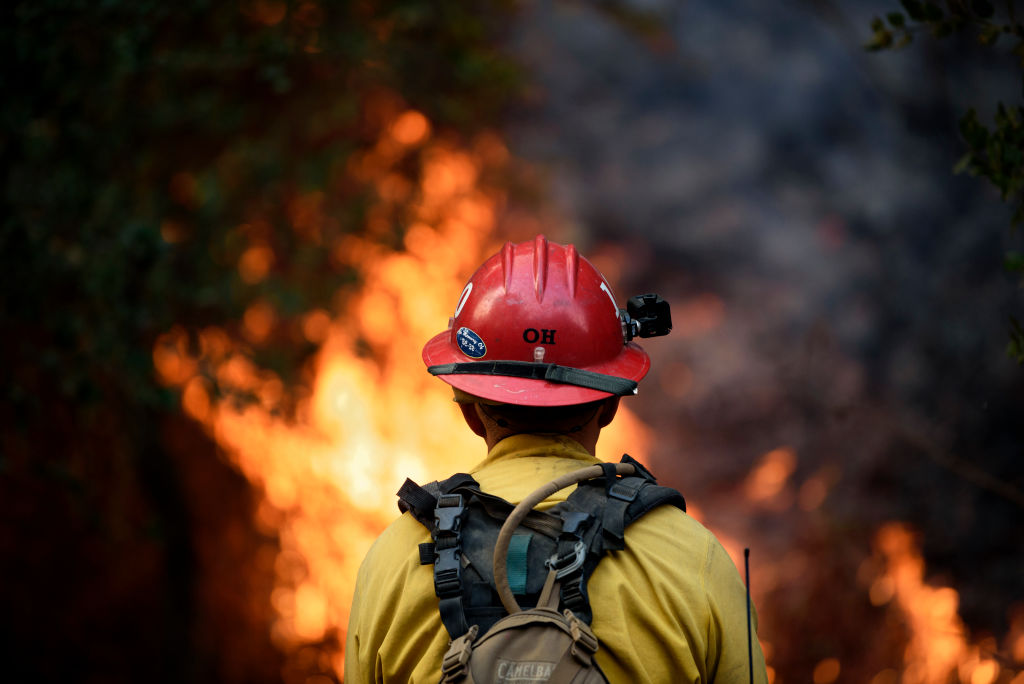
When forest fires roared through Carpinteria, Calif., in 2017, 88-year-old Nadine Demalleville had just five minutes to evacuate the mobile home where she lived alone with her beloved cats. The former nurse relied on a wheelchair and had no way to get herself to the emergency shelter 20 miles away. Were it not for a neighbor who stepped in to help, Demalleville would likely have perished in the fire. Instead, she arrived safely at the shelter with a lunchbox full of medications but little else.
As climate change fuels ever-deadlier disasters, it may seem that no one is immune to the wildfires, storms and heat waves that plague our baking planet. While this may be true, some are more threatened than others, and older women like Demalleville are among those most at risk.
Older adults represent a significantly disproportionate share of deaths associated with climate-fueled disasters. Consider the lives lost in the Lahaina wildfires in Maui this summer: of the 89 casualties identified by Maui officials, 73 percent were among people over 60 years of age.
That figure is tragically consistent with other disasters across the U.S. over the last 20 years. In the aftermath of Hurricane Katrina in 2005, 70 percent of those who died were over 65. In 2021’s Winter Storm Uri and 2022’s Hurricane Ian, two-thirds of the casualties were among people over 60. When Hurricane Maria swept Puerto Rico in 2017, 100 percent of the “excess deaths” caused by the storm were among older adults.
Why are older adults—especially older women—more vulnerable? Part of the problem is that emergency planners are ill-informed about our needs. For example, while many emergency management plans address the needs of elderly residents of nursing homes or assisted living facilities, they don’t address the overwhelming share of older adults who live at home in the community, often alone.
Just 4 percent of older adults live in congregate facilities like these, and older women are even more likely to live alone. Outside of congregate facilities, one in three women over 65 lived by themselves in 2020, compared to one in five men of the same age. When planning efforts focus solely on mitigating risk for people in group-living facilities, older women living alone are unaccounted for, and their needs are left unmet.
In the U.S., there is an assumption that everyone can and will drive—to evacuate in an emergency, to seek out a cooling or warming center in extreme weather, or to stockpile food and groceries to prepare for a disaster. But whether for reasons of cost, capability, or choice, nearly one in five older adults do not drive. More than a third of women over 75 do not drive, making them dependent on public transit, friends, or family for mobility. Without a focus on creating safe, viable and affordable transportation alternatives for people who don’t drive, older adults and people with disabilities are forced to identify solutions for themselves, leaving them at greater risk.
Older adults and women also use the internet differently—and less frequently—than other ages, requiring that local leaders utilize a varied approach to disseminating preparedness information, warnings and other critical information. In 2021, roughly one-quarter of the people who reported that they do not use in-home internet were people over 65, and a slightly higher ratio of women than men (of all ages) said the same.
The well-documented financial plight of many older women further compounds their climate-related risk. The ability to tap into savings is often essential to cover the costs of temporary evacuation, to modify one’s home to withstand weather-related risks or to fix the damage caused by previous disasters.
Increasingly, heating and cooling costs are unaffordable for older adults on a fixed income. Here, too, older women are at greater risk, because they receive 20 percent less in Social Security benefits than men. Nearly half of adults aged 55 through 66 have no retirement savings, and this figure is higher for women. Unless they can tap needed funds to prepare for and recover from disasters, many older women will continue to live in homes in need of repair, or in conditions that exacerbate underlying health risks.
So, what we can we do, as older women—and what should we demand of our communities—to reduce our risk from climate disaster?
First, we can insist that local and state leaders proactively consider age and abilities when they devise emergency response and climate resilience plans. It is critical that leaders understand the financial, mobility, and communication needs of older adults well before a disaster strikes.
Second, we can take proactive steps to make our needs known, by signing up for a “special needs registry” that allows residents to state the type of support they may need in times of disaster. If such a registry doesn’t exist in your community, encourage local leaders to start one.
Third, we can undertake and support efforts to make our communities more climate resilient. That means retrofitting homes to be more energy efficient and better able to withstand extreme conditions. It also requires widespread commitment to transportation and communication systems that work better for older adults, particularly those who don’t drive or who lack home internet.
These interventions will not eliminate the growing climate crisis. But they can make communities more resilient in the face of future climate changes and reduce the disproportionate risk that older women—and all older adults—currently bear.
Nadine Demalleville was fortunate to make it through the fire that consumed her community. We shouldn’t have to rely on luck to survive climate disaster.
Up next:
U.S. democracy is at a dangerous inflection point—from the demise of abortion rights, to a lack of pay equity and parental leave, to skyrocketing maternal mortality, and attacks on trans health. Left unchecked, these crises will lead to wider gaps in political participation and representation. For 50 years, Ms. has been forging feminist journalism—reporting, rebelling and truth-telling from the front-lines, championing the Equal Rights Amendment, and centering the stories of those most impacted. With all that’s at stake for equality, we are redoubling our commitment for the next 50 years. In turn, we need your help, Support Ms. today with a donation—any amount that is meaningful to you. For as little as $5 each month, you’ll receive the print magazine along with our e-newsletters, action alerts, and invitations to Ms. Studios events and podcasts. We are grateful for your loyalty and ferocity.





